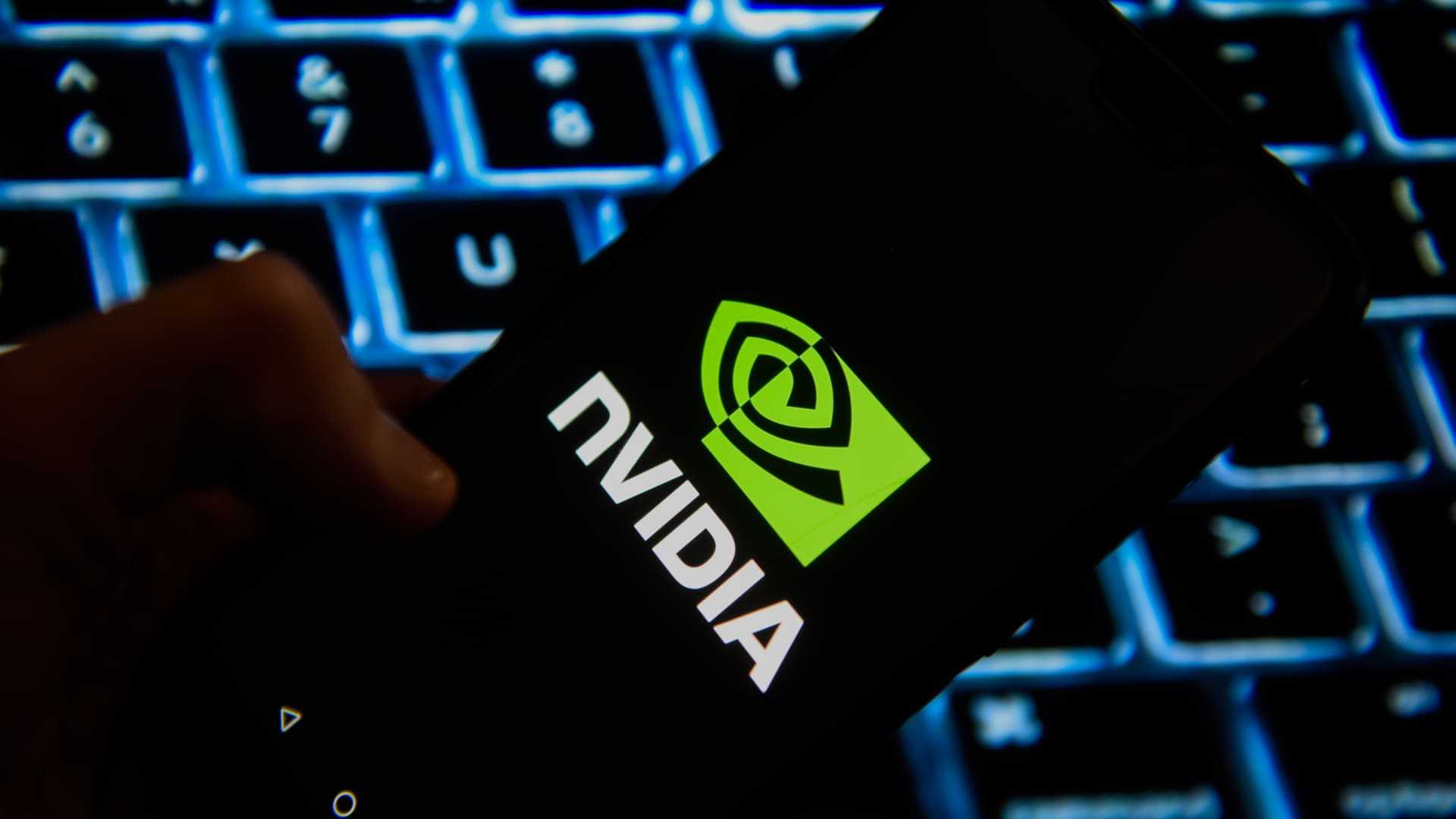Sell Nvidia or stick with it? Here’s what experts say

Nvidia has had an astronomical rise, soaring over 200% in 2023 alone on the back of the artificial intelligence buzz. Though the stock dived more than 5% on Friday and by another 2% on Monday, it’s still up this year by around 73%. In fact, many are still bullish on Nvidia, giving more upside to its shares. But after a heady year of exploding revenue and profit projections, some may start to question the long-term sustainability of its growth rate. Is it time to take profit, even if only partially — or should investors stay the course? Here’s what those who currently hold Nvidia shares are doing — or planning to do — with their positions. Sell at least some Some are saying it’s time to sell or that they have already sold part of their Nvidia shares. Vahan Janjigian, chief investment officer at U.S.-based Greenwich Wealth Management, says he had a “big position” in Nvidia until recently. “But I got a little nervous because I do think the stock is overvalued, especially when you look at it on a price to sales basis. It’s selling for about 35 times sales, which is very high compared to some of the other technology companies,” he told CNBC’s ” Street Signs Asia ” on Tuesday. “If you believe that Nvidia can grow its revenues by 30% annually, which I think it can for at least a few years, but it would have to do that for almost 15 years to be able to get back your investment in the stock and that assumes a 100% profit margin,” he added. Janjigian would rather invest in Nvidia via exchange-traded funds now. He says he has “rather large” positions in three of them: the SPDR S & P 500 ETF Trust, Invesco QQQ Trust Series 1 and VanEck Semiconductor ETF. He pointed out that Nvidia has a large weightage in all of them, taking up 26% of the VanEck Semiconductor ETF. “I felt I no longer needed to own the stock individually,” he said, adding that having both the stock and ETFs gave him “too much exposure” to Nvidia. Paul Gambles, managing partner of MBMG Family Office Group, told CNBC Pro on Monday that he’d sell Nvidia right now. Based on history, he said, Nvidia is due for a 50% to 90% decline “soon.” “Although whether that happens now or next year is pretty much impossible to tell but precedent would indicate that it’s time to be worried – the longest spell without an ‘event’ was 2012-2018,” he added. Gambles says investors should have been buying puts when they were cheaper, as the sometimes high volatility of Nvidia is “potentially ideal” for options strategies. Options allow you to bet on whether you think an asset is going up or down. You can buy or sell options contracts and implement various strategies. Buying a “put option” is profitable for an investor if the market goes down. Conversely, buying a “call option” pays if the market goes up. It can be a risky way to invest and therefore suited to sophisticated investors. Here’s how it works. “If they’re unprotected and holding NVDA, and if the pricing now makes puts unattractive today, then they should probably devise an exit/profit-taking/position management strategy with a ladder of limit sells and stop-losses,” Gambles said. A “limit sell” will typically attempt to sell the stock at a certain price, and “stop losses” means putting in orders to immediately sell off the shares to cut losses when the price drops below a certain price. Laddering in this context refers to a strategy of putting in some sell orders at various price points. “Even if we’re right on the fall, it’s up +100% in 6 months so while that momentum continues, you don’t want to be making knee-jerk exits but holding NVDA is playing with fire right now,” Gambles said. Jordan Cvetanovski, portfolio manager at Sydney-based Pella Funds Management, told CNBC Pro he has already taken profit on some Nvidia shares — and did so even before the recent declines. ‘Do some rebalancing’ There’re definitely “some alarm bells that there is so much euphoria,” Cvetanovski said. “So there is potentially a situation where things have been overboard, but only from just a trading perspective, but long term, I’m not concerned.” “But in the short term, I’m a little bit concerned. So we’ve taken a little bit off the table, but not as big as you would expect,” he said. Craig Johnson, chief market technician at Piper Sandler, is another one who isn’t so optimistic on Nvidia. He says the stock has gone “parabolic,” meaning its momentum — or the velocity and speed of price increases — has accelerated. “People are going to have to do some rebalancing. And as that action happens, you can certainly lose some of the momentum. I think it’s a great company, but it’s sort of a dangerous stock to be jumping into after moves this large in such a short period of time,” he told CNBC’s ” Worldwide Exchange ” on Monday. Stick with it Louis Navellier of Navellier and Associates is still fairly bullish, and says it’s definitely not time to sell any Nvidia shares yet. “No, no, because I don’t have other companies with 200% sales growth. And it is trading about 26 times forecasted earnings and it’s a monopoly,” he told CNBC Pro last week. Navellier thinks Nvidia is “reasonably priced,” given its forecast earnings and its “monopoly” on graphics processing units in the AI market. “Obviously, its dominance isn’t going to last forever. You will hit a point like Apple is hit where you know, the sales are so sputtering, the margins are not expanding,” he said. “But I’m going to ride it as long as the sales are strong and the margins are expanding.”









